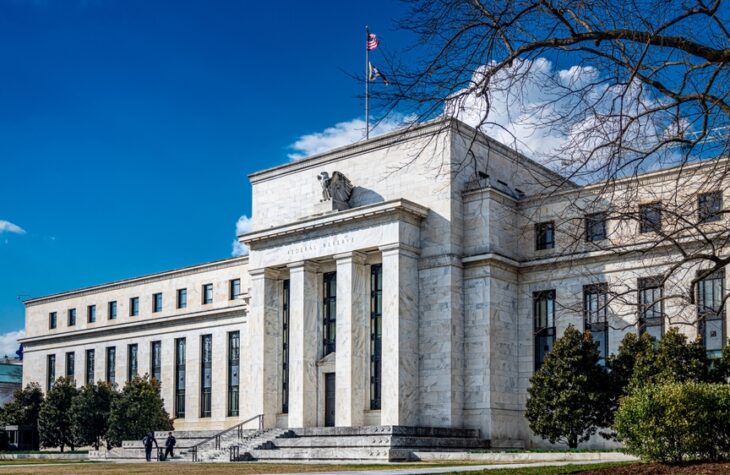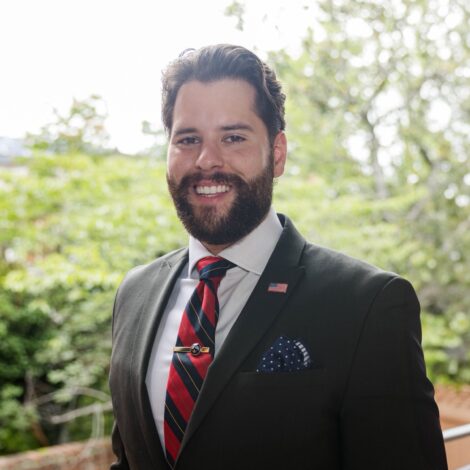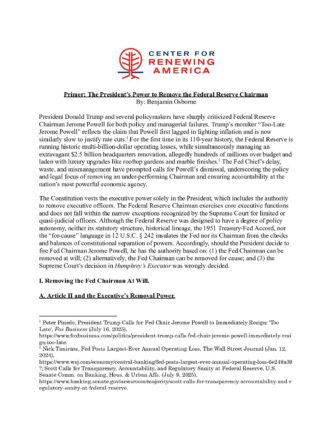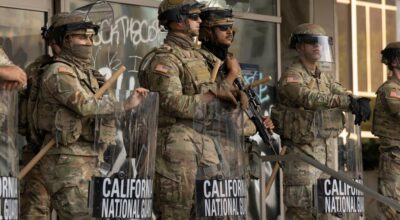
Primer: The President’s Power to Remove the Federal Reserve Chairman
President Donald Trump and several policymakers have sharply criticized Federal Reserve Chairman Jerome Powell for both policy and managerial failures. Trump’s moniker “Too-Late Jerome Powell” reflects the claim that Powell first lagged in fighting inflation and is now similarly slow to justify rate cuts.1 For the first time in its 110-year history, the Federal Reserve is running historic multi-billion-dollar operating losses, while simultaneously managing an extravagant $2.5 billion headquarters renovation, allegedly hundreds of millions over budget and laden with luxury upgrades like rooftop gardens and marble finishes.2 The Fed Chief’s delay, waste, and mismanagement have prompted calls for Powell’s dismissal, underscoring the policy and legal focus of removing an under-performing Chairman and ensuring accountability at the nation’s most powerful economic agency.
The Constitution vests the executive power solely in the President, which includes the authority to remove executive officers. The Federal Reserve Chairman exercises core executive functions and does not fall within the narrow exceptions recognized by the Supreme Court for limited or quasi-judicial officers. Although the Federal Reserve was designed to have a degree of policy autonomy, neither its statutory structure, historical lineage, the 1951 Treasury-Fed Accord, nor the “for-cause” language in 12 U.S.C. § 242 insulates the Fed nor its Chairman from the checks and balances of constitutional separation of powers. Accordingly, should the President decide to fire Fed Chairman Jerome Powell, he has the authority based on: (1) the Fed Chairman can be removed at will; (2) alternatively, the Fed Chairman can be removed for cause; and (3) the Supreme Court’s decision in Humphrey’s Executor was wrongly decided.
I. Removing the Fed Chairman At Will.
A. Article II and the Executive’s Removal Power.
Article II vests “[t]he executive Power” in the President alone and obliges him to “take Care that the Laws be faithfully executed.”3 That clause, as interpreted by the Court in Myers v. United States, establishes that the President must have the power to remove those officers who act on his behalf.4 Without that power, the President cannot be held politically accountable for the execution of federal law, a proposition reaffirmed in Free Enterprise Fund and Seila Law.5 This was the very problem Alexander Hamilton warned in Federalist No. 70 that “would greatly diminish the intended and necessary responsibility of the chief magistrate himself.”6 Officials exercising executive power must be accountable to the President, who has the constitutional responsibility for executing the laws.
In Seila Law, the Court held unconstitutional the for-cause removal protection of the single Director of the Consumer Financial Protection Bureau, emphasizing that the exceptions recognized in Humphrey’s Executor (for bipartisan commissions with quasi-legislative or quasi-judicial duties) and Morrison v. Olson (for inferior officers with limited duties) do not extend to principal officers exercising executive power.7 The logic of Seila Law applies to the Federal Reserve Chairman, a principal “executive officer” empowered to lead enforcement, regulatory supervision, and economic policy nationwide.8 Like the CFPB Director, the Fed Chairman is a single, Senate-confirmed officer who wields sweeping and continuous influence over vital areas of economic governance — yet is not accountable to the President under current statutory interpretation. Just as the Court in Seila rejected such a structure as violating Article II, so too must the same constitutional reasoning apply to the Fed Chairman.
B. The Federal Reserve Is Not a Successor to the First and Second Banks.
It is incorrect to assert that the Federal Reserve inherits constitutional status or institutional protection from the First and Second Banks of the United States. Those early banks were private corporations chartered by Congress, not public agencies.9 Their presidents were not federal officers appointed under Article II, nor were they shielded from executive or legislative oversight.10 Congress retained complete power to alter or dissolve their charters.11 The Supreme Court in McCulloch v. Maryland acknowledged their corporate nature and emphasized that their powers derived entirely from federal statute, not from the Constitution.12
By contrast, the modern Federal Reserve System, established in 1913 and restructured by the Banking Act of 1935, created an agency of the federal government, whose Board of Governors are principal officers, nominated by the President and confirmed by the Senate for staggered 14-year terms.13 The Act permits their removal by the President “for cause,” but that language does not by itself insulate them from broader constitutional scrutiny.14
The Court’s footnote in Seila Law referencing the Federal Reserve’s supposed tradition as a “special arrangement” merely assumed the relevance of such history “for argument’s sake.”15 That isolated dictum cannot create constitutional immunity. It was not part of the Court’s holding, nor did it analyze the statutory framework or functional powers of the Federal Reserve in detail. In legal terms, dicta are non-binding comments made in passing, and courts are not required to follow them as precedent. In Trump v. Wilcox, the Court rightly declined to treat the Federal Reserve’s design as dispositive, noting that it is a “uniquely structured, quasi-private entity,” not clearly entitled to the exception recognized in Humphrey’s Executor.16 This shows a judicial hesitance to grant the Fed categorical independence from executive oversight and reinforces the need to scrutinize the institution’s powers under Article II.
C. The 1951 Treasury-Fed Accord Does Not Create Constitutional Insulation.
Proponents of Federal Reserve independence frequently cite the 1951 Treasury-Fed Accord as a landmark moment securing institutional autonomy from the Executive Branch.17 The Accord indeed ended the practice of the Treasury dictating monetary policy to the Federal Reserve, particularly during and after World War II.18 However, the Accord was the result of negotiation, not adjudication, and it did not legally or constitutionally immunize the Federal Reserve from the President’s supervisory authority.
The confrontation between Chairman Marriner Eccles and the Truman administration revealed how tension between fiscal and monetary authorities could manifest in public conflict, but ultimately, resolution came through political and personnel changes, not through a declaration of executive restraint.19 Eccles’s replacement by William McChesney Martin illustrated the President’s ongoing ability to steer the Fed’s direction through appointments and leadership changes.20
The Accord may provide a normative model of central bank independence, but it does not constitute a legal or constitutional barrier to executive removal authority.21
D. The Federal Reserve Exercises Executive Power.
The Fed’s Board of Governors exercises substantial executive authority. It enforces banking laws, supervises financial institutions, sets margin requirements for securities transactions, and imposes penalties for violations of law.22 As Chief Justice Roberts explained in Seila Law, “executive power” includes the ability to “initiate enforcement actions” and “impose penalties,” functions routinely performed by the Board.23
The Board’s regulatory and supervisory functions are deeply interwoven with its monetary role and have clear executive character.24 Even scholars who defend the Fed’s monetary independence acknowledge that these regulatory authorities are subject to Article II control.25
Because the Chairman leads both the Board and the FOMC, and because no statute limits the Chairman’s powers to merely advisory or adjudicatory functions, the role squarely fits within the category of an executive office under modern constitutional doctrine.
II. Removing the Fed Chairman For Cause.
12 U.S.C. § 242 provides for the for-cause removal of the Fed Chairman by the President. This provision ensures that the Chairman can be held accountable to the President and the American people as the “active executive officer” of the Federal Reserve System Board of Governors.26
A. Powell Misled Authorities on the Fed’s Renovation Project.
Federal Reserve Chairman Jerome Powell’s handling of the $2.5 billion renovation of the Fed’s headquarters has come under intense scrutiny due to his highly questionable public testimony regarding the project.27 In June 2025, Powell testified to Congress that the renovation did not include several luxury features such as rooftop gardens, private elevators, and marble finishes.28 However, official records from the National Capital Planning Commission (NCPC) show that these amenities were in the original design plans.29 Powell’s denials to Congress constitute a false statement, and if it were proven that Powell knowingly misled Congress, he could be in violation of 18 U.S.C. § 1001 for false statements, which criminalizes knowingly making false statements in matters under federal jurisdiction. Additionally, his statements could fall under 18 U.S.C. § 1621 for perjury, which applies to material false testimony under oath.
Further, Powell arguably violated the National Capital Planning Act, specifically 40 U.S.C. § 8722(b)(1), by failing to notify the National Capital Planning Commission (NCPC) of significant deviations from the 2021 approved renovation plans for the Fed’s renovations. This statute mandates that federal agencies consult with the NCPC before preparing construction plans or making commitments to acquire land for proposed developments and projects in the National Capital Region.30 If substantial changes were made to the renovation project without NCPC’s review and approval, this could constitute a violation of the Act. These actions could be deemed malfeasance or neglect of duty, providing grounds for removal under 12 U.S.C. § 242 of the Federal Reserve Act.
The Trump Administration, through OMB Director Russ Vought, has publicly stated that Powell’s actions misrepresented the scope of the renovation and failed to comply with federal planning laws and are grounds for removal.31 Vought’s letter suggests that Powell’s actions are indicative of “gross mismanagement” and could warrant a for-cause removal under the Federal Reserve Act.32 Vought’s letter affirms that Powell’s actions fell materially below the standards expected of the Chairman, justifying his removal from office. The President has the legal authority to remove the Chairman under the Federal Reserve Act, and Powell’s handling of the renovation project meets the standard of mismanagement or gross neglect to justify removal. Seila Law reaffirms the President’s constitutional authority to remove officials for misconduct, neglect, or failure to perform the duties of their office.33 In Seila Law, the Court held that removal protections for officials like the CFPB Director that impair the President’s executive power violate the separation of powers.34 The reasoning from Seila Law directly applies to the Federal Reserve Chairman. Powell’s failure to accurately disclose the renovation’s scope and his misrepresentation to Congress about luxury features on the Fed’s building demonstrate gross neglect that undermines the integrity of his office and the central bank.
The Federal Reserve’s policy independence does not prevent the President from removing Powell. Advocates of this position would point to the Federal Reserve Act’s provision that Powell may only be removed “for cause,” arguing that this protects his position.35 However, this view ignores the Constitution’s clear vesting of executive power in the President.36 The President’s power to remove executive officers is integral to the separation of powers, as established in Myers v. United States and reaffirmed in Seila Law. In Seila Law, the Court ruled that statutory for-cause protections afford the President the authority to remove officers for failure to perform their duties competently.37 Thus, the Federal Reserve Act does not provide absolute immunity from removal when an official, like Powell, engages in misconduct or neglect.
Powell’s actions were not mere administrative oversights or errors and indicate intentional misconduct. Seila Law clarified that neglect of duty or failure to follow statutory requirements qualifies for removal.38 Powell’s false testimony to Congress about the renovation’s scope and his failure to comply with the National Capital Planning Act meet a threshold of malfeasance and neglect of duty, giving rise to a for-cause removal. Powell’s actions were not minor errors but significant failures that undermine the integrity of his office.
III. Overruling Humphrey’s Executor: Fully Restoring the President’s Constitutional Removal Power.
It is our philosophy that Humphrey’s Executor was wrongly decided and has caused significant harm to our constitutional system by diminishing the President’s authority over, and accountability for, executive agencies and yielding that power to Congress and the courts. The decision sidestepped the earlier decision in Myers v. United States from just nine years earlier, which held that the President has the constitutional right to remove a “purely executive officer” at will.39 Humphrey’s Executor placed limits on the President’s removal power and undermines the separation of powers by giving executive officers protection from executive oversight.40
A. Harm Caused by Humphrey’s Executor.
Humphrey’s Executor has had lasting negative consequences for the division of powers between the branches of government. The decision undermined the President’s constitutional role in overseeing the executive branch, giving independent agencies authority that was not constitutionally granted. By restricting the President’s power to remove officials without cause, the decision gave rise to a growing independence of agencies like the Federal Reserve, the Federal Trade Commission, and the Securities and Exchange Commission, which are not as directly accountable to the elected President as the Constitution demands. This undermines the balance of powers and diminishes the President’s executive authority in the nation’s day-to-day governance, thereby shrinking the power of the Article II President in absolute terms, and in relative terms vis-a-vis the other two branches.
Humphrey’s Executor diminished the President’s ability to exert control over executive officers, who are tasked with carrying out laws that directly affect the lives of the American people.41 By curbing the President’s removal power, the decision allowed unelected officials to act outside the purview of elected executives, weakening the democratic accountability that is essential for preserving the integrity of government.
B. Myers v. United States: A Clearer Understanding of Executive Power.
Myers established that the President’s authority to remove executive officers is absolute.42 The Court in Myers held that the President’s power to appoint and remove officials from executive agencies is inherent in the vesting clause of Article II, which grants the President “the executive Power” to execute the laws of the land.43 Myers reaffirmed that executive officers, especially those carrying out the law and overseeing the administration of government functions, must remain subject to direct presidential control to preserve democratic accountability and ensure that the President can enforce the law faithfully.44
The Humphrey’s Executor decision was a misstep that weakened the President’s authority and should be overruled. The Court should return to the clarity of Myers, which clearly asserts that executive power is vested solely in the President and that removal power is an inherent part of that power. This is not only consistent with the Constitution but also ensures that the President can hold the executive branch accountable, particularly when agencies like the Federal Reserve are wielding significant power over national economic policy.
The Supreme Court has already signaled a willingness to reconsider precedents that weaken the President’s power to oversee the executive branch, as seen in Seila Law and Trump v. Wilcox. In Seila Law, the Court invalidated the Consumer Financial Protection Bureau’s structure, which included for-cause removal protections for its single director.45 The Court narrowed Humphrey’s Executor and held that for-cause protections for the CFPB director violated the separation of powers, stating that the President must have the authority to remove such executive officers without for-cause restrictions.46 Trump v. Wilcox furthers this shift. In 2025, President Trump removed Gwynn Wilcox from the National Labor Relations Board (NLRB) and Cathy Harris from the Merit Systems Protection Board (MSPB) without cause.47 The Supreme Court’s decision to allow their removal, while their cases proceed, indicates a readiness to reconsider and overturn Humphrey’s Executor.
IV. Conclusion.
The Court in Trump v. Wilcox cast doubt on the supposed independence of the Federal Reserve, observing that it rests on shaky footing—grounded solely in the confines of a single footnote, which itself depends on the phrase “even assuming.”48 Nowhere in the text of the Federal Reserve Act does it state that the Federal Reserve is a successor to the First or Second Bank of the United States.49 Nor does the Act establish that the Federal Reserve is wholly autonomous or insulated from the Executive’s checks and balances.50
One of the key rationales behind the Court’s decision to allow the removal of the executives in question during the pendency of litigation in Trump v. Wilcox was its recognition that “the Government is likely to show that both the NLRB and MSPB exercise considerable executive power.”51 The same is true of the Federal Reserve. The Constitution confers the powers of the federal government among three branches. How, then, can any one branch, or a combination of them, create an independent agency that is wholly beyond the checking function of the others?
It is fundamentally unconstitutional for an unelected official – one who wields immense influence over the nation’s monetary policy – to be shielded from meaningful oversight by elected officials. This defies the structure of our constitutional order and undermines democratic accountability. Allowing the President to remove Powell over administrative failures like the botched headquarters renovation would not undermine the Federal Reserve’s independence nor set a dangerous precedent for political interference. The Federal Reserve Act does not provide blanket protection from removal in cases of misconduct or mismanagement. The President’s ability to remove officials is essential to ensuring accountability and the effective execution of the laws. As the Court affirmed in Seila Law, policy advantages, such as independence, cannot override the constitutional principle of separation of powers. Powell’s actions fall squarely within the grounds for removal, and the President’s authority to act is not diminished by the Fed’s operational independence.
More significantly, the Chairman of the Federal Reserve Board is a principal officer exercising significant executive authority. Under the Constitution’s separation of powers and the Supreme Court’s most recent jurisprudence, the President has the power to remove such officers at will. The Federal Reserve’s policy independence does not translate into constitutional insulation. Historical arrangements, statutory terms, and functionalist arguments cannot supersede the core Article II principle that executive power is vested in the President alone.
Endnotes
1. Peter Pinedo, President Trump Calls for Fed Chair Jerome Powell to Immediately Resign: ‘Too Late’, Fox Business (July 16, 2025), https://www.foxbusiness.com/politics/president-trump-calls-fed-chair-jerome-powell-immediately-resign-too-late.
2. Nick Timiraos, Fed Posts Largest-Ever Annual Operating Loss, The Wall Street Journal (Jan. 12, 2024), https://www.wsj.com/economy/central-banking/fed-posts-largest-ever-annual-operating-loss-6e249a39?; Scott Calls for Transparency, Accountability, and Regulatory Sanity at Federal Reserve, U.S. Senate Comm. on Banking, Hous. & Urban Affs. (July 9, 2025), https://www.banking.senate.gov/newsroom/majority/scott-calls-for-transparency-accountability-and-regulatory-sanity-at-federal-reserve.
3. U.S. Const. art. II, §§ 1, 3.
4. Myers v. United States, 272 U.S. 52, at 117–18 (1926) (“it was urged that the natural meaning of the term ‘executive power’ granted the President included the appointment and removal of executive subordinates. If such appointments and removals were not an exercise of the executive power, what were they? … the association of removal with appointment of executive officers is not incompatible with our republican form of Government.”).
5. Free Enter. Fund v. Pub. Co. Acct. Oversight Bd., 561 U.S. 477, 513–14 (2010); Seila Law LLC v. Consumer Fin. Prot. Bureau, 591 U.S. 197, 214–18 (2020).
6. The Federalist No. 70 (Alexander Hamilton), https://guides.loc.gov/federalist-papers/text-61-70#s-lg-box-wrapper-25493457 (as cited in 561 U.S. 477, at 514 (2010)).
7. Seila Law, 591 U.S. at 199-200.
8. 12 U.S.C. § 242.
9. A History of Central Banking in the United States, Federal Reserve Bank of Minneapolis, https://www.minneapolisfed.org/about-us/our-history/history-of-central-banking (last visited July 11, 2025).
10. Id.
11. Id.
12. McCulloch v. Maryland, 17 U.S. (4 Wheat.) 316, 409–10 (1819).
13. Federal Reserve History, Banking Act of 1935, https://www.federalreservehistory.org/essays/banking-act-of-1935 (last visited July 11, 2025); Federal Reserve Board, The Fed Explained — Who We Are, https://www.federalreserve.gov/aboutthefed/fedexplained/who-we-are.htm (last visited July 11, 2025).
14. 12 U.S.C. § 242.
15. Seila Law, 591 U.S. at 222 n.8.
16. Trump v. Wilcox, 605 U.S. ___ (2025) (stay order); see also Amy Howe, Supreme Court Allows Trump to Remove Agency Heads Without Cause for Now, SCOTUSblog (May 22, 2025), https://www.scotusblog.com/2025/05/supreme-court-allows-trump-to-remove-agency-heads-without-cause-for-now.
17. Richard H. Timberlake, The Tale of Another Chairman, Fed. Reserve Bank of Minneapolis (1999), https://www.minneapolisfed.org/article/1999/the-tale-of-another-chairman.
18. Id.
19. Id.
20. Id.
21. Id.
22. Fed. Reserve Bank of Cleveland, Understanding the Federal Reserve’s Structure, https://www.clevelandfed.org/about-us/understanding-the-federal-reserve.
23. Seila Law, 591 U.S. at 220.
24. Graham Steele, Agency Independence and the Federal Reserve’s Regulatory Functions, Yale J. Reg. (2025), https://www.yalejreg.com/nc/agency-independence-and-the-federal-reserves-regulatory-functions-by-graham-steele/.
25. Aditya Bamzai & Aaron L. Nielson, Article II and the Federal Reserve, 109 Cornell L. Rev. 843-44, 869-63 (2024), https://publications.lawschool.cornell.edu/lawreview/wp-content/uploads/sites/2/2024/08/Bamzai-Nielson-final.pdf.
26. 12 U.S.C. § 242.
27. Scott Calls for Transparency, Accountability, and Regulatory Sanity at Federal Reserve, U.S. Senate Comm. on Banking, Hous. & Urban Affs. (July 9, 2025), https://www.banking.senate.gov/newsroom/majority/scott-calls-for-transparency-accountability-and-regulatory-sanity-at-federal-reserve; Russell Vought, Director, Office of Mgmt. & Budget, to Jerome H. Powell, Chair, Bd. of Governors of the Fed. Rsrv. Sys., Letter Regarding Federal Reserve Headquarters Renovation (July 10, 2025).
28. Jerome H. Powell, Chairman, Bd. of Governors of the Fed. Reserve Sys., Semiannual Monetary Policy Report to the Congress: Testimony Before the S. Comm. on Banking, Hous., and Urban Affairs, 118th Cong. (2025), https://www.banking.senate.gov/hearings/06/18/2025/the-semiannual-monetary-policy-report-to-the-congress.
29. Nat’l Capital Planning Comm’n, Marriner S. Eccles and Fed. Reserve Bd. East Bldg. Renovation and Expansion: Staff Report (Sept. 2021), https://www.ncpc.gov/docs/actions/2021September/8113_Marriner_S_Eccles_and_Federal_Reserve_Board-East_Building_Renovation_and_Expansion_Staff_Report_Sep2021.pdf.
30. 40 U.S.C. § 8722 (a)-(b)(d).
31. Russell Vought, Director, Office of Mgmt. & Budget, to Jerome H. Powell, Chair, Bd. of Governors of the Fed. Reserve Sys., Letter Regarding Federal Reserve Headquarters Renovation (July 10, 2025).
32. Id.
33. See Seila Law LLC v. Consumer Fin. Prot. Bureau, 591 U.S. 197 (2020).
34. Id. at 198.
35. 12 U.S.C. § 242.
36. U.S. Const. art. II, § 1.
37. 591 U.S. at 199 (2020).
38. See 591 U.S. 197 (2020).
39. Humphrey’s Executor v. United States, 295 U.S. 602, 626-27 (1935) (distinguishing Myers v. United States, 272 U.S. 52 (1926)).
40. Humphrey’s Executor v. United States, 295 U.S. 602 (1935).
41. Id.
42. 272 U.S. 52 (1926).
43. U.S. Const. art. II, § 1.
44. 272 U.S. at 212 (1926) (“the power of removal must remain where the Constitution places it, with the President, as part of the executive power, in accordance with the legislative decision of 1789 which we have been considering.”).
45. 591 U.S. 197 (2020).
46. Id.
47. Trump v. Wilcox, 605 U.S. ___ (2025) (stay order).
48. Id.; Seila Law, 591 U.S. at 222 n.8.
49. Federal Reserve Act, Pub. L. No. 63-43, 38 Stat. 251 (1913).
50. Id. 51. Trump v. Wilcox, 605 U.S. ___ (2025) (stay order).





